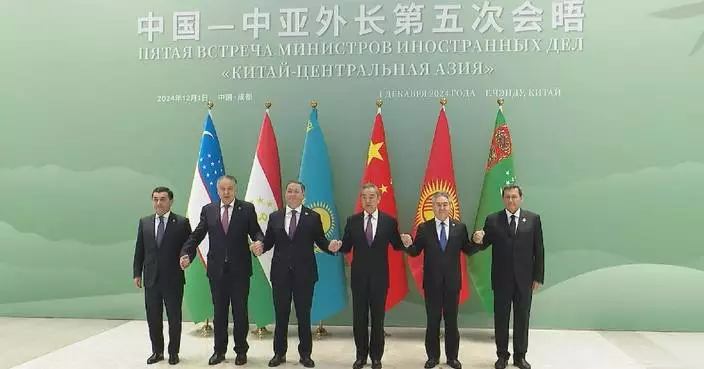China's success in giant panda breeding over recent years has significantly contributed to global biodiversity efforts, according to reports made public prior to China's second National Ecology Day which falls on August 15.
Over the past few decades, China has consistently prioritized biodiversity conservation, actively participating in global biodiversity governance, with giant panda breeding making a central symbol of these efforts.
Since the 1990s, the giant panda -- China's national treasure and a beloved species worldwide -- has been at the heart of international conservation collaborations, with breeding being a crucial element in the survival and growth of the species.
As of February, giant pandas residing abroad have given birth to 68 cubs, which has significantly contributed to the expansion of the global captive panda population.
Whenever a panda living abroad gives birth, China would dispatch experts or provides remote assistance to ensure the health of the cubs and their mothers.
Wu Kai, a seasoned breeder affectionately known as the "panda nanny" by panda fans, has helped deliver more than 100 panda cubs, including superstars like Xiang Xiang in Japan, Fu Bao in South Korea, and Katyusha in Russia.
Before Katyusha's birth on August 24 last year, Wu Kai was sent by the China Conservation and Research Center for the Giant Panda to Moscow to assist in the delivery of the cub by the panda mother Ding Ding.
Similarly, Xing Hui and Hao Hao, a pair residing in Belgium since 2014, have successfully given birth to three cubs -- Tian Bao, born in 2016, and twins Bao Di and Bao Mei, born in 2019 - thanks to the collaborative efforts from both Chinese and international partners.
The family of five now lives in Pairi Daiza, often referred to as "Europe's most beautiful zoo." The three cubs are scheduled to return to China this fall as part of international agreements.
Under these agreements, panda cubs born abroad will return to China between the ages of two and four. This practice ensures that the pandas contribute to the genetic diversity and overall health of China's captive panda population.
The return of foreign-born pandas has captured international headlines in recent years, most notably with the return of Xiang Xiang in 2013 and Fu Bao earlier this year.
On June 12, after more than two months of quarantine, Fu Bao was introduced to the public at the Wolong Shenshuping Base, sparking another wave of panda mania.
Since the beginning of 2023, China has welcomed back 26 pandas whose international agreements had expired or who had reached the appropriate age for repatriation.
"These cubs have successfully returned to China, integrating into our captive panda population and playing a vital role in the healthy progression of our breeding efforts," said Wei Rongping, deputy director of China Conservation and Research Center for Giant Panda.

China's successful giant panda breeding significantly contributes to global biodiversity efforts









